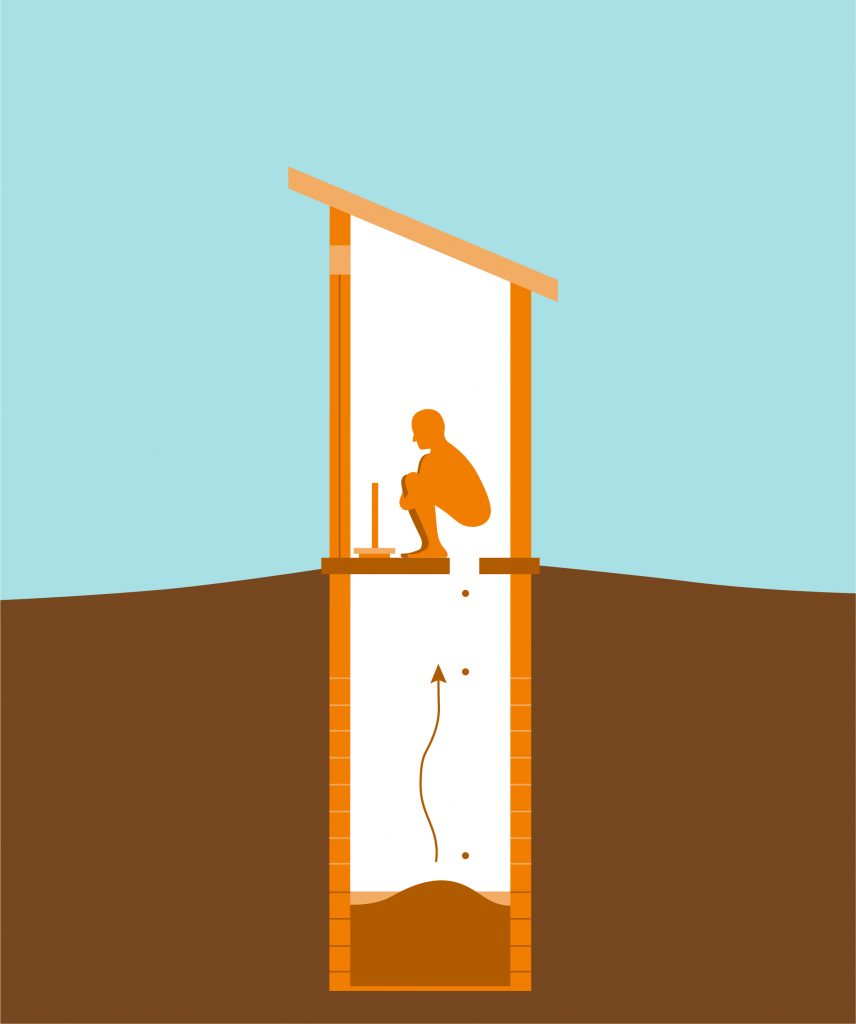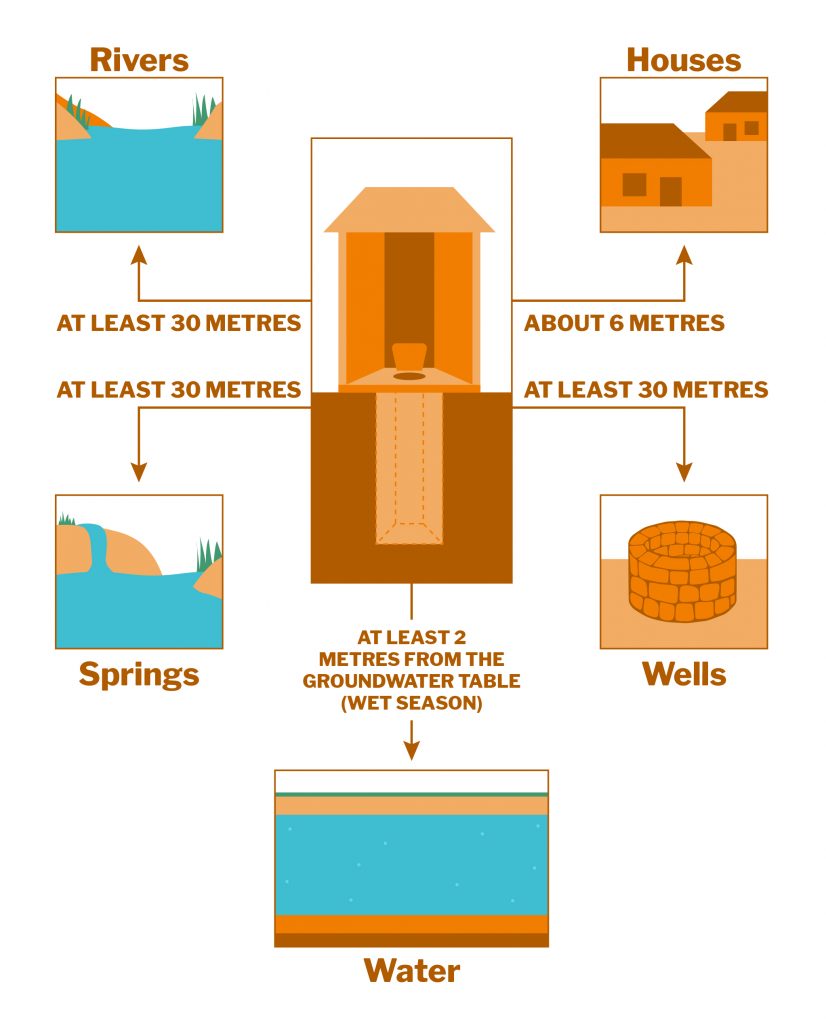Also known as a long drop, the Pit Latrine is a type of toilet that collects human faeces and urine in a hole in the ground. It is often covered by a concrete slab with a drop hole in. Some latrine’s drop holes are connected to a seat or squatting pan for added user comfort [1]. Latrines can function without water (dry toilet) but also can have a water seal (pour-flush pit latrine) [2]. Pit latrines are a low-cost method of separating humans and faeces, in turn, reducing the contact of humans with harmful pathogens. Latrines also decrease the transfer of pathogens between faeces and food by flies. These pathogens are major causes of diarrhoea and intestinal worm diseases along with many other faeco-oral diseases.


Design
There are three major parts to a pit latrine: a hole in the ground; a concrete slab with a small hole, and a shelter. The shelter is often referred to as an outhouse and helps to offer privacy for the user, which open defecation lacks . Light is often prevented from accessing the pit due to the attraction of flies. Lids for the hole are often used as a prevention technique. The World Health Organisation recommend that the pits are built downstream from the water supply to prevent contamination of potentially fatal pathogens as well as at least 10m from wells to prevent groundwater pollution.
- 10m deep x 1m across
- Hole no larger than 0.25m
- Emptied when pit fills within 0.5m from top (or new pit constructed and shelter moved to new location)
Faecal sludge management is required with pit latrines. This involves emptying as well as transporting and treating and using the collected faecal sludge. Water pollution and public health risks increase when this is not carried out correctly [3].

Pros
In general, pit latrines with a slab are effective sanitation systems because they isolate human excreta from the surrounding environment and prevent the transmission of faeco-orally transmitted diseases. They also have other advantages:
- They do not require water so are appropriate in areas where there is no adequate water supply.
- Squatting is normal to many people and thus is acceptable to users.
- Alternating double pits will allow the excreta to drain, degrade and transform into a nutrient-rich, safe humic material that can be used to improve soils.
- They avoid contamination of surface water and top soil if properly installed and maintained.
- They can be constructed with minimum cost using local material and local skills.
- The presence of properly constructed slabs will allow easy cleaning and avoid flies and unsightliness.
- Feasible
Cons
- Foul odours from the pit and they can be a favourable place for the breeding of flies and mosquitoes.
- With single pits, a new pit needs to be dug every time one gets full.
- They can be susceptible to failure/overflowing during floods. Other disadvantages can be overcome by proper design, construction and usage.
- Children may be discouraged from using the latrine if the slab is not designed with them in mind and is too big for them [4].

